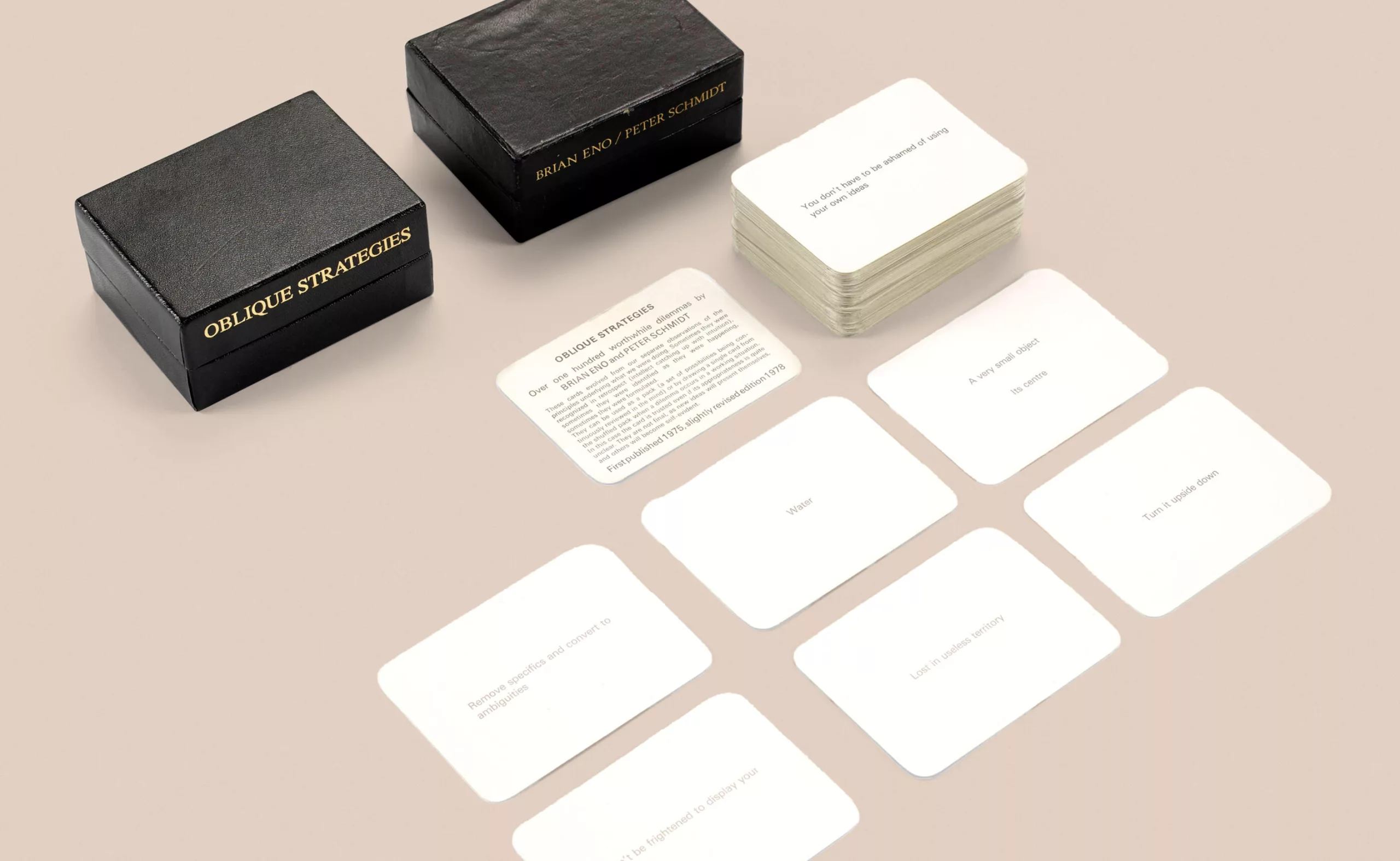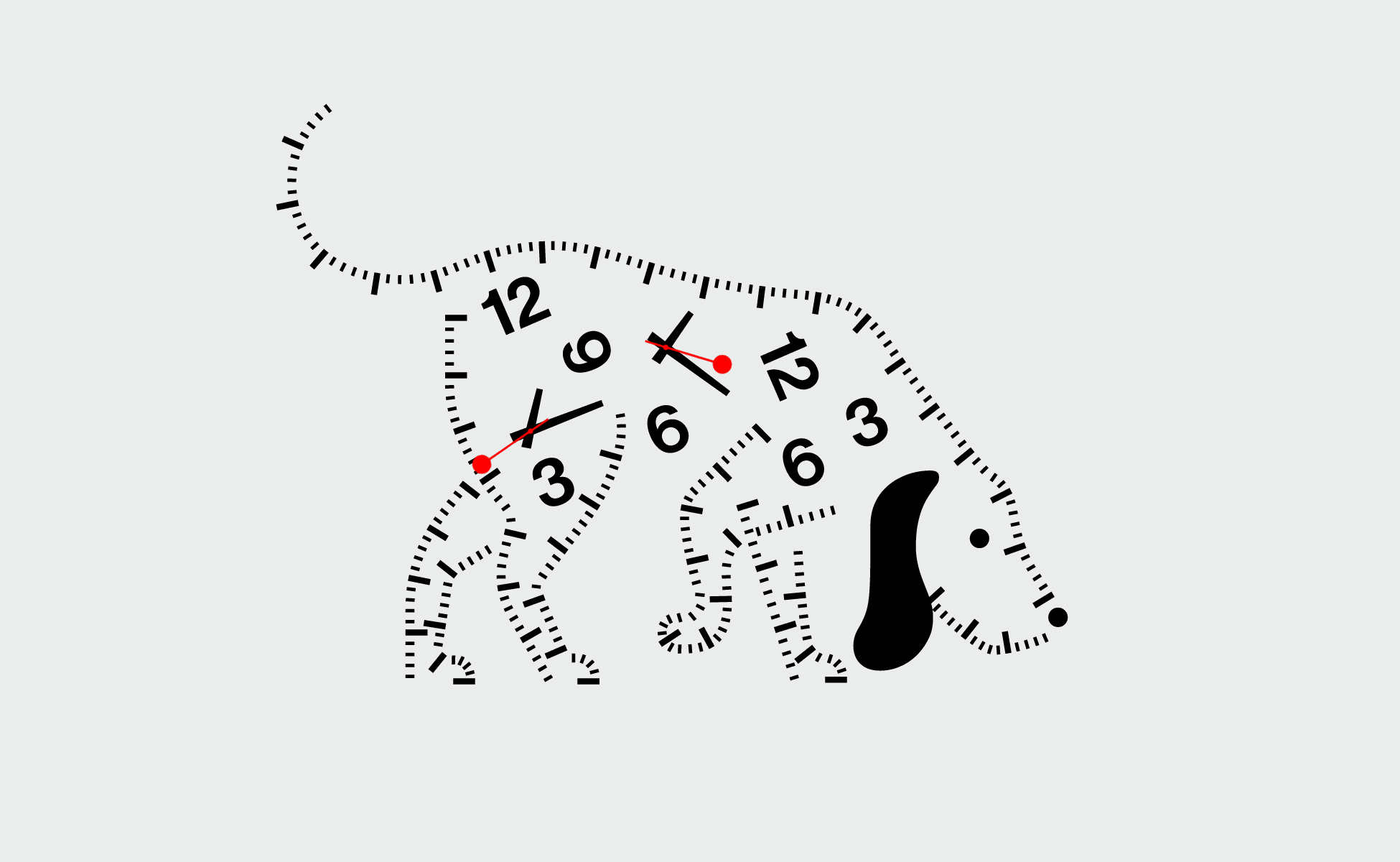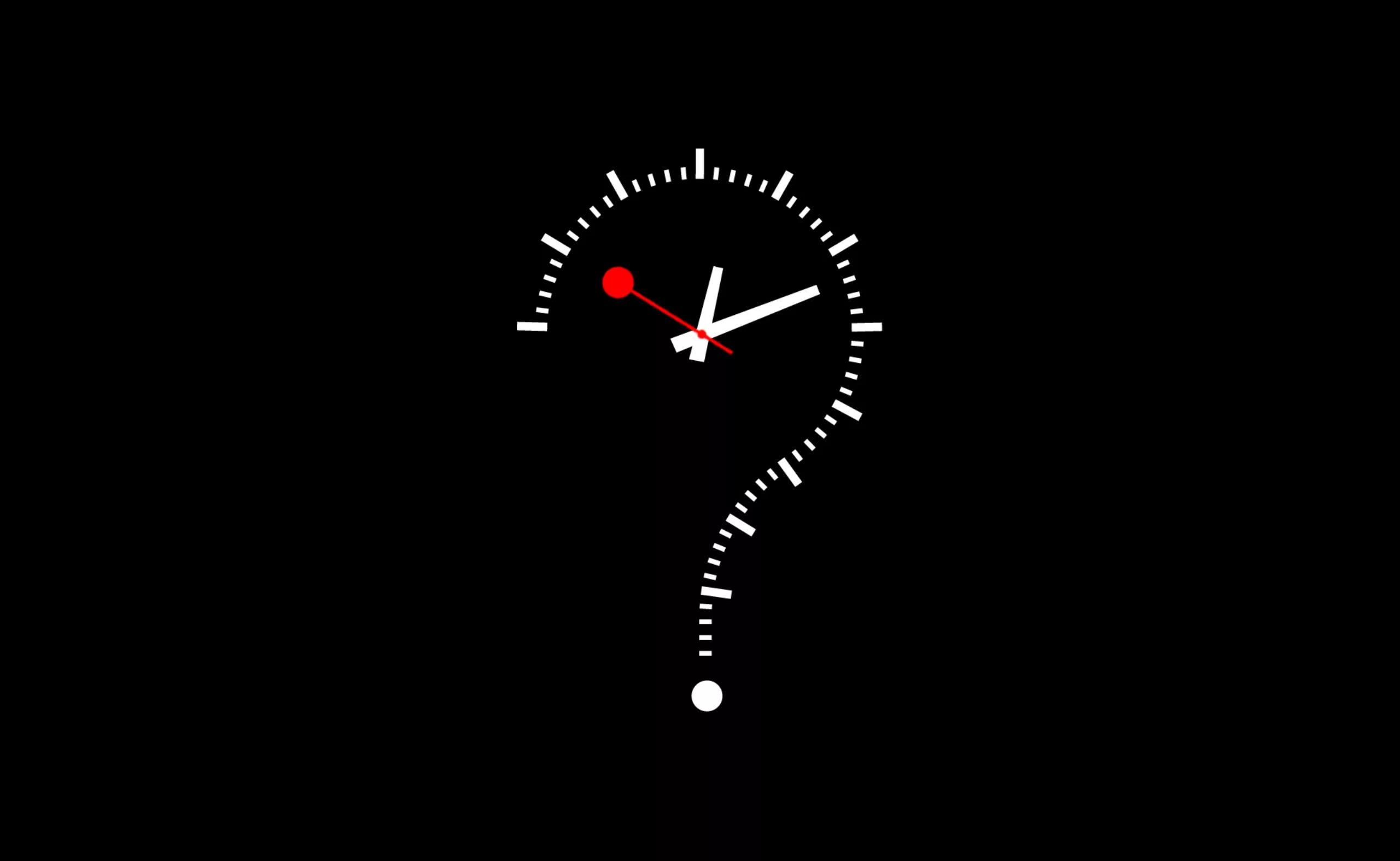Time and and creation #04 – optimize and boost creativity with flow
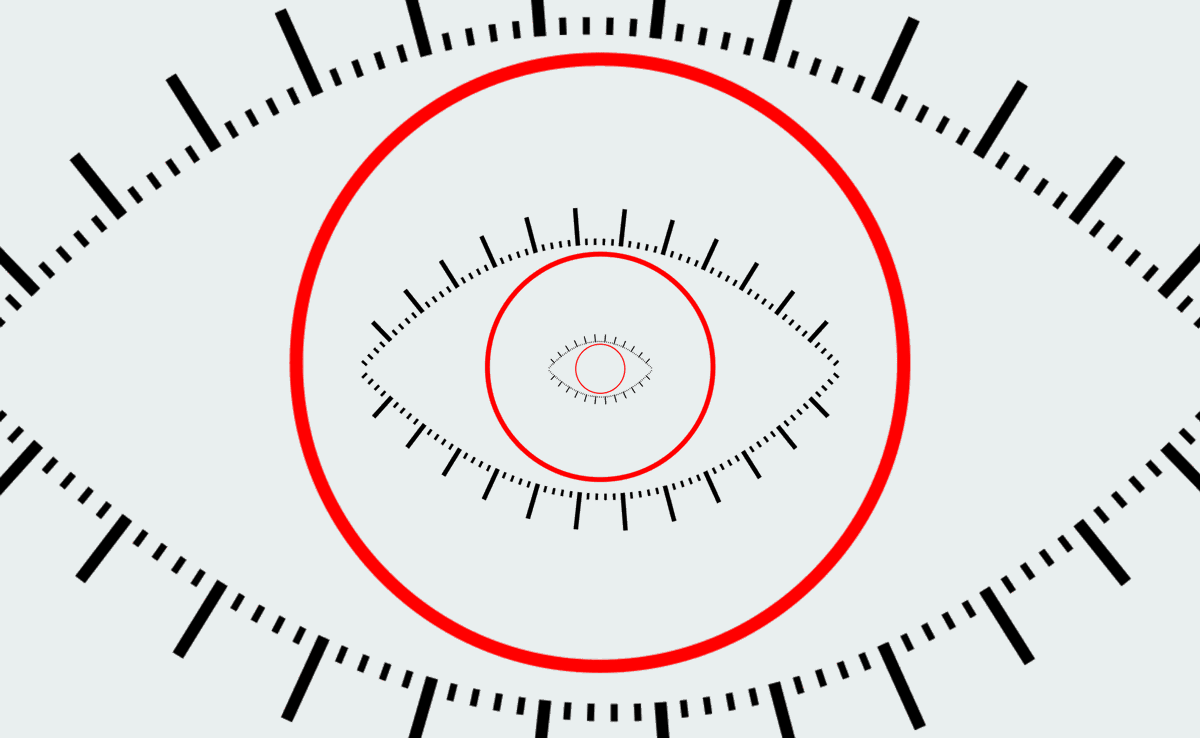
This will be the last article in our series of articles on “Time and Creation“. We’ll look at both terms from a more practical and methodological point of view this time. How to boost creativity and improve your creative time ? Several techniques can inspire you to change your mindset.
The following articles have been published:
01 – Working flat out, a tiring tradition
Historical and societal approach: the origin of the expression “charrette” and our relationship to flat out work in our societies
02 – The impact of time on our creative brain
Scientific approach: the way our brain perceives time, the mechanisms that are triggered when we work under pressure, and how stimulants boost our performance
03 – In search of creative time
Human approach: what is creativity and what does it depend on to blossom
04 – Optimize and boost creativity with flow
Methodological approach: some practical techniques to be more creative and reach flow, an optimal state of consciousness
Let’s say you have a new creative lead to give to a client. As we saw in the previous article, your creativity depends on your character and culture, the time of the day you work, your mood, etc. But let’s see what YOU can control, and what you can do to boost your creativity and productivity. Of course, these are not a list of techniques to be followed one after the other, but rather a state of mind to cultivate and achieve, in order to be right here right now.
Stimulate and maintain your motivation to boost your creativity
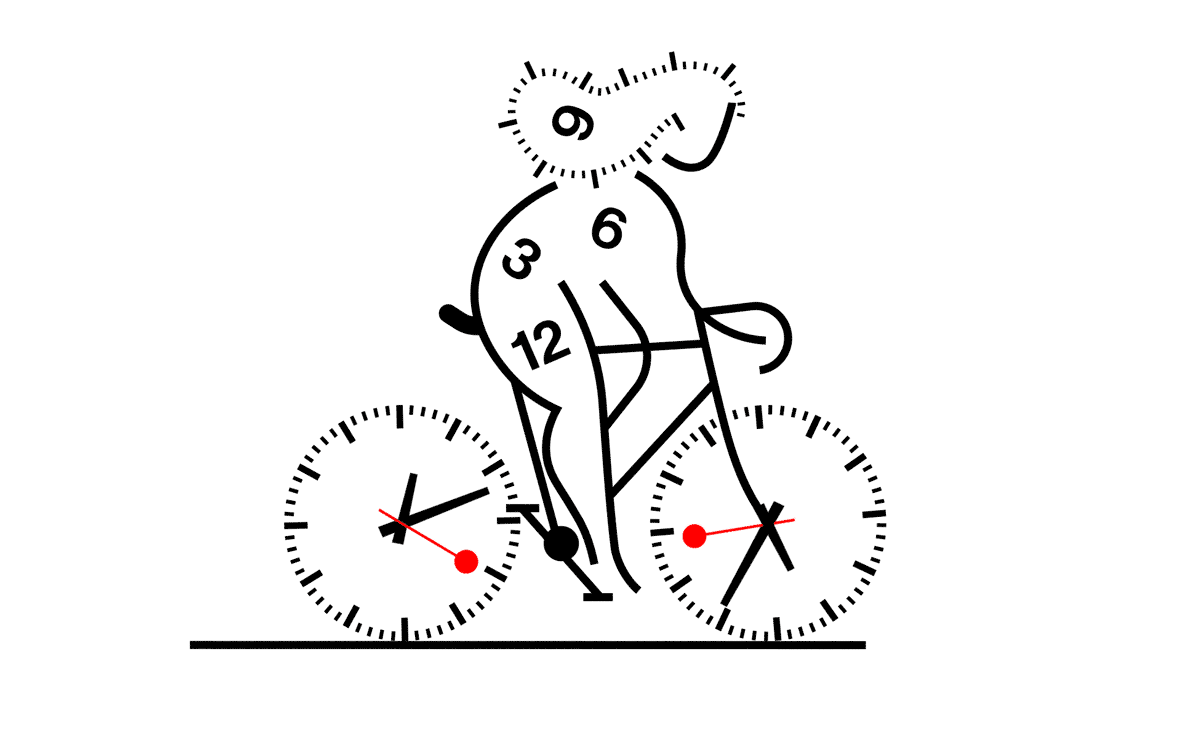
We often tend to believe that the reasons we are drawn to a topic or not are definitive, when in fact we can consciously and actively stimulate and cultivate our interest. Even when a subject does not interest us at first sight, it is possible to act beforehand to stimulate our brain. As a bonfire, motivation must be kept alive. But to do so, it is good to act early, to prepare embers on which to blow when comes the time, and rekindle the flames. Here are some techniques to stimulate and maintain your motivation and boost creativity, every day, be it at work or at home.
Train your curiosity and cultivate an open mind
According to Steven Kotler, who we will talk about below, one ember to blow on is curiosity. Curiosity leads to passion, which enhances attention and focus, leading to motivation and effectiveness. Focusing on nurturing and developing curiosity on a specific topic allows us to practice and feed our divergent thinking, and thus to both foster and increase our creative potential. This leads to a virtuous chain reactions.
The open mind that we acquire by being curious (or vice versa!) allows our brain to create new bonds, to connect various and different ideas together, and to make sense all together. The new meanings we create by keeping our curiosity and creativity alive allow us to create passion: the more we create connections on a subject by linking sources of curiosity, the more we release dopamine and noradrenaline, and the more addictive and passionate we become about that subject or activity. Thus, it becomes easier to concentrate and to be more efficient and creative on that topic. Moreover, questioning one’s knowledge and admitting to be ignorant or humble on certain topics allows us to be more open-minded and to have better cognitive abilities.
The random input method to vary sources of curiosity
For example, you can boost your curiosity and feed your divergent thinking by trying to link subjects together, even if they are not related at first sight. Edward de Bono’s “random input method” (1968) proposes to randomly pick a word (preferably a noun, which refers to something concrete like “chicken coop”, or “leather” but which has nothing to do with the subject we are interested in) and then building up ideas and concepts in order to feed a reflection. It helps to get out of the classical way of thinking and to find new ideas. You can also use random images and simply let your imagination flow without necessarily trying to link them to your main topic. When looking for ideas for a theater logo for instance if you picked the word henhouse, you can think of eggs, henhouse, fox, raven and therefore La Fontaine, compliments, eloquence… and thus have food for thought which differs from the traditional red velvet seats and the wooden stage.
Telling stories make one’s thoughts evolve
Another way to link topics together is to enjoy telling stories among several subjects, to link them verbally. By filling in the gaps between different concepts with narrative, we invent a story that the brain will more easily remember. We create new bonds that feed our curiosity, because the brain will always want to weave new ones. Sharing these curious researches with someone else feeds our reflections and enables them to evolve, expand or to be questioned. A new cycle of creative research then begins.
For instance, to write this article I first looked at the sociological aspect beyond creating in a rush, which led me to ask myself about time in a philosophical way and how it is perceived in our society. I then delved into neurosciences and our biological clock to understand how time is perceived by our brain, which echoed an online course I was following simultaneously entitled “gaining efficiency thanks to neurosciences” and another one on childbirth as a trance. I was thus able to connect these subjects, which at first sight had nothing to do with each other, thanks to my new knowledge and my curiosity about, among other things, the functioning of the brain. Ultimately as I was reading by chance a Spanish article about creativity, I discovered flow and the different learnings of Steven Kotler. The subject of flow opened new and extremely interesting doors that I was able to cross-reference and connect with all my previous research to complete and finalize these articles. I was able to validate or question my knowledge by talking with my colleagues and confronting their practical and sensitive vision of creativity. And it is because I had all this in mind that I was able to write in a state of flow.
Stay informed and draw as much as possible to boost your creativity
To feed your curiosity, you can also do regular monitoring; read, watch and listen to specific information related to a given subject. You can regularly get into the habit of drawing in a notebook, no matter if you draw quick sketches in a few seconds or stylized typographical characters. This exercise has many benefits, it allows us to use our memory, our imagination, to be focused in the present moment, to give shape to the links that we created mentally in our head, to reduce our stress level… By dint of nourishing our creative soil and practicing these practices, we acquire faster reflexes, and we create new connections more easily which serve as a basis to maintain our curiosity and boost our creativity.
Because the more curious we are, the more information we gather (not always useful, but always interesting for us), the more connections we create, the more creative we become… and so on. So much for the creative fertile ground. And when we want to get creative, we can create favorable conditions to channel this creativity and make it grow.
Taking regular breaks helps to come up with ideas and be more creative
It is a common misconception that you will come up with more creative solutions to a problem if you keep looking at it. This is what we are asked to do at school or at work when we have to stick to regular schedules and not look too distracted. Our nose in the grindstone, we always look more serious and efficient (that’s what we talked about in our first article on the rush culture).
But our brains don’t work that way at all. When it comes to creative work, focusing on solving a problem for hours has been proven to be perfectly counterproductive! As we have seen, it is better to first cultivate your curiosity to boost your creativity.
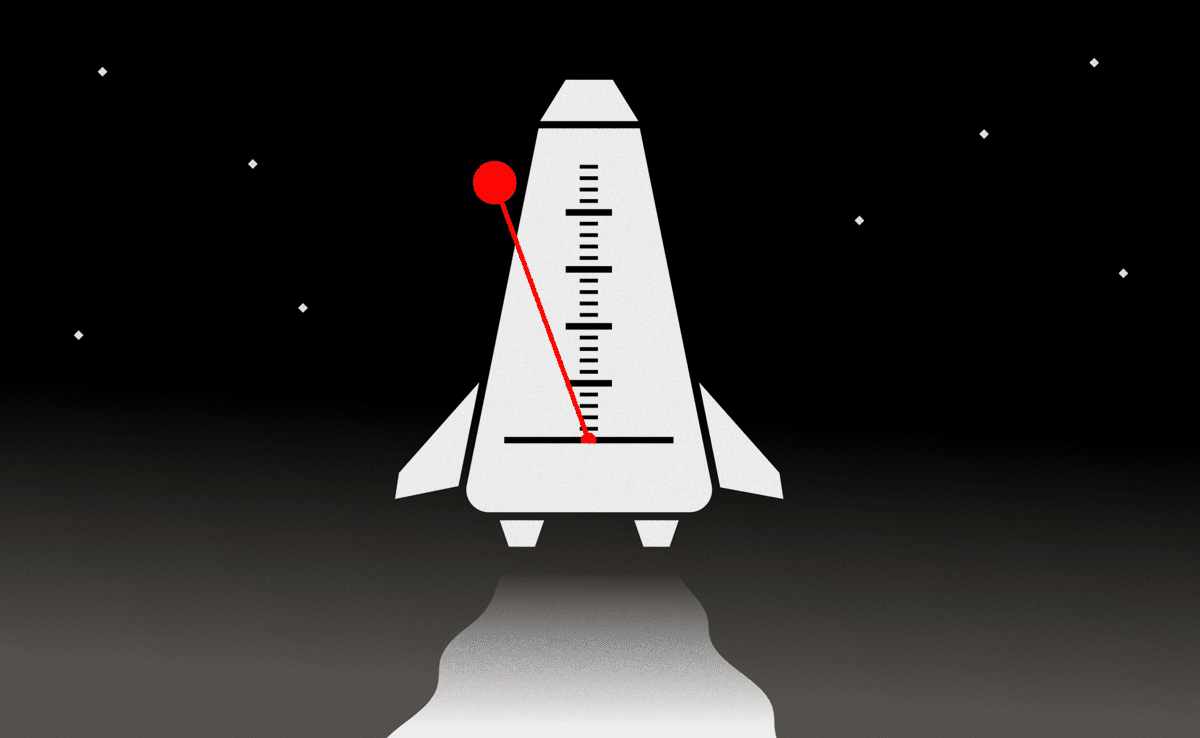
Working with interruptions to boost creativity
Illich’s law explains that productivity (the capacity of the brain to produce something) is limited in time and that at a certain point it becomes inefficient: “after a certain number of hours, the productivity of hours spent first decreases and then becomes negative“. So there is no point in trying to find inspiration by working 2 hours in a row (unless you are in a state of flow, which we will talk about below, but in that case you have probably already had the idea). Steven Kotler explains that the chemical messages of neurotransmitters are not emitted continuously, and that they have a limited effect in time. Our ability to concentrate lasts about 20 minutes, which is why it is important to take breaks to avoid saturation when looking for an idea.
One of the keys to boost creativity and find an idea is therefore to take real breaks at regular intervals, i.e. to clear your head and get out of your task. For example, to alternate 2 minutes of break every 10 minutes for a light reflection load, 5 minutes of break every 25 minutes (the Pomodoro method) for creative sessions, or 12 minutes every 12 minutes in the case of boring or mechanical tasks.
Taking a break allows you to come up with new creative ideas, gain efficiency, unlock complicated situations, while taking care of your health. When we talk about taking a break, the ideal is to get a change of air, to get up, to do something repetitive and mechanical, to listen to the little birds, or look at something other than a screen. In short, to be in the present moment.
Practising the art of doing nothing to boost creativity
By taking such a break after an intense work session, you will feel like you are doing nothing, like you are useless, and that’s perfect! Think again: your brain actually never takes a break, not even when you’re asleep. This article from Cerveau et Psycho explains the essential importance of breaks for creative people. “These moments of disconnection are, in fact, precious: they give us the opportunity to explore new ideas or fantasies, to reinforce certain memories or to weave plans for the future. Our brains simulate what might happen and our different potential responses to it.” In other words, it creates the famous connections needed to spark creative concepts into ideas. Thus, “mental wandering is a foundation for creativity.” By letting go, the break allows us to simulate new situations in order to shape divergent ideas, and thus take a step back from the problem.
In practical terms, you can use a countdown timer and decide to look up every 25 minutes, or use an application such as Pomodoro (indeed) which reminds you to take a break… as long as you let go of your smartphone. A watch is fine too!
Smartphones are creativity’s worst enemy
Indeed, smartphones are a very bad idea for finding inspiration, because they do not rest the brain at all. The constant visual and sound notifications send us doses of dopamine and make us expect a message or a like. Our brain is constantly on alert, projected into the future, waiting for something new to stimulate it and secrete dopamine again. So we are never here and now with a smartphone, never fully focused or disconnected.
To fight against the compulsion to look at your phone, the best thing to do is to break your addictive habits, and go through a dopamine withdrawal. Difficult, but extremely beneficial! You can for example start by deleting applications, or move them away from your home screen so that you don’t find them by reflex, and of course cut all notifications. For the most courageous, you can decide to live without a smartphone (like me) and thus reconnect to the present moment. Radical, but effective.
Wandering at the office
The real problem is that today it is difficult to “do nothing”. In this age of constant over-stimulation, there is no room for idleness. Not to mention that smartphones devour every last minute of free time we have left to “do nothing”, stimulating our reactivity by constantly projecting us out of the present moment, and eating up the last crumbs of our mental wandering. The opposite of a beneficial break. Pascal wrote: “All the misfortune of men comes from one thing, which is not knowing how to rest in a room.” So imagine worse: in an office! All of our time is already spent on various tasks that are measured and, above all, timed. Eight hours of work 5 days a week, a break at noon: our efficiency is measured, counted, paced. The race against the clock is more in vogue than the nose in the air. So, to boost creativity, let’s try to wander more in our busy days!
Breathing better to reduce stress
Whether stress suits you or not, there are techniques you can use to condition or reduce it. If you like pressure, you can decide to set a fictitious but strict deadline to motivate yourself to complete a project more quickly. Of course, you’ll have to stick to it, and why not put a project manager in the loop and play the game together?
Practice cardiac coherence and belly breathing
On the contrary, to lower stress levels and pave the way for full concentration, there are breathing methods that promote cardiac coherence, which slow down and synchronize the heartbeat and lower the level of cortisol. The idea is to breathe in and out for equal amounts of time. You can breathe in by mentally counting 5 seconds and then breathe out for 5 seconds, over several cycles and several minutes, and gradually increase to 8 seconds for example, as long as you feel comfortable and serene. Count one cycle of inspiration-expiration by joining your thumb to your middle finger, then a 2nd one with your index finger and so on to the little finger. Repeat 3 times each hand, 12 complete breaths in total.
You can also practice belly breathing, focusing on your belly button going up and down, without moving your ribs. You can put one hand on your heart and the other on your belly to better feel the movements. It is of course possible to combine these two synchronized breathing exercises.
Synchronize your heart and brain to limit stress and increase cognitive abilities
It’s scientific: by slowing down your heart rate, you encourage your brain to slow down its wave rhythm, to go from beta to alpha brain waves, which are the waves of light relaxation and calm, favoring memory and learning. Inspiration-expiration coherence allows the heart and the brain to synchronize; the cognitive and the emotional. It increases parasympathetic activity, and promotes emotional stability. This is also what happens when you listen to music with a particular rhythm that you know by heart, or if you make a repetitive gesture that does not require a particular effort (conscious breathing, but also walking, knitting…): you enter a meditative state. Thus, not only will you be less stressed, but you will also be more efficient.
Flow, an optimal state of consciousness that favors creativity
And since we are talking about meditative state, an excellent way to stimulate your brain and to give the best and boost creativity is to dive into flow, a powerful cerebral state which multiplies our creative capacities. Flow in itself has nothing to do with creativity, but it allows it to express itself fully and without hindrance. That’s why when you are creative or you want to boost your creativity it is interesting to experience flow.

Flow: the Holy Grail of creatives
Steven Kotler is a specialist, entrepreneur and researcher in many fields, including flow. He explains that flow is an optimal state of consciousness, in which we feel at our best and where we are at the maximum of our mental capacities. The flow is like a bubble in which we are concentrated and absorbed entirely by a task, all the rest around fades away: the feeling of hunger, of tiredness, the notion of time…
Flow is a universal state that anyone can experience, but it is particularly sought by creative people to boost creativity. Sportsmen, musicians, students, artists, but also yogis or monks more often experience flow, which requires great concentration, not as a mental effort but rather as openness, acceptance of possibilities and letting go.
As we have seen in our article on the brain, our prefrontal cortex is partially inhibited, the right hemisphere (seat of emotions) becomes predominant, the exchanges of the neuronal synaptic connections are faster and release a whole lot of chemical substances. We become both extremely efficient and focused. This is why our brain is constantly seeking this optimum. Corine Sombrun, ethnomusicologist and trance expert with the ability to self-induce shamanic trances, explains that “trance (flow, ed. note) is going to this perimeter where you are no longer anyone and everything at the same time, and most artists experience this, it’s magical: we are no longer egocentric or what we are used to be, we no longer have the rumination of the mind or this notion of I, of I think.” Perhaps you have already experienced this one day? If not, here are some ways to make it happen.
Conditioning to reach flow
The idea here is not to induce a shamanic trance but only to put our brain in specific conditions. It then becomes possible to inhibit part of our reason and to let our right hemisphere freewheel, the one thinking in images and being in the present moment. The expression of creativity then becomes fluid, limpid, without limits.
Take time, without distractions
As we have seen, our ability to concentrate lasts about 20 minutes. But to induce flow, which is this intense and complete state, ideal for developing an idea, you must first allow yourself between 90 and 120 minutes of intense concentration without any other distraction (no notifications), and stick to it.
To do this, it is necessary to cut yourself off from the rest of the world. Our brain, as a noise-reducing headphones, spends its time filtering out unnecessary stimuli: street noises, mouse clicks of our colleagues, not seeing each detail of our environment, sorting out scents… without us even realizing it. To help you concentrate better and to be dedicated to a particular task, you can voluntarily put yourself in a bubble, for example with a noise-reducing headset, by switching off your smartphone, by distancing yourself from colleagues or distractions.
Conversely, repetitive or binary music following a certain rhythm (around 133 BPM for example, but it depends on each person) can sometimes accompany or even induce this trance because it overstimulates the right hemisphere of the brain and the heartbeat. Some people even use i-dosing, specific sounds that are supposed to stimulate the brain like drugs, and we now understand why.
One step at a time
Once this creative time is defined and this bubble is set up, you can focus on a very short term task to accomplish which, once anticipated and then realized, will secrete a dose of dopamine and maintain this state of full consciousness and concentration in a loop. Finish this paragraph, finish this grid on Illustrator, develop another color, continue this range… Lists can be useful, as long as you have short objectives (we won’t put “finish the creative lead” but rather “validate the choice of colors”, “test the banner”). It is also wise to ask for an immediate validation if needed (before or after the flow session), in order to clarify objectives.
Knowing precisely the next steps in the short-term allows our brain not to scatter and therefore stay focused. The constant release of dopamine also allows us to stay in the present moment and thus to become more efficient and boost creativity.
The novelty, complexity, and unpredictability brought by the subject in question are also conditions that help trigger this state.
Knowing your deepest motivations
As we saw at the beginning of this article, motivation is a vector for creation. Different techniques have been proposed to develop your curiosity on almost any subject, but it is also possible to surf on your deepest motivations. It is possible to condition yourself to reach the state of flow during an activity that thrills our inner forces. Finding your Ikigai can help you define these strengths.
For example if you are creative, emphatic, altruistic, you like to transmit and understand, then you can more easily enter the flow by writing, drawing for someone, completing a complex construction with a child, spinning a pottery… If you are rather combative, voluntary, intrepid, original and curious, you may prefer an extreme sport, solving complex problems or puzzles, or an improvisation session. The idea you are looking for will come to you more easily in one of these sessions than sitting behind a desk.
Why rush induces flow
It is easy to understand why working flat out can be so beneficial and why some people seek to induce this rush. It is an overnight work, without distractions and the feeling of having an infinite time in front of you. The rush also offers complexity to solve, a need to be creative, and potential unpredictability that stimulates the brain’s undivided attention and open mind. It makes it possible to achieve flow in a group, provided that the others are in the same dynamic. This will bring an extra degree of flow because collaboration, cohabitation and communication are powerful triggers.
So it is not really the rush itself that creates this trance of supreme efficiency but the conditions put together that allow us to dive into this state. At the office for example, we can perfectly find an intense flow by working in a group without cell phone, in a soundproof room, solving complex problems together, with a minimum of 1h30 ahead. Or alone with music and without distractions; the open-space being the worst enemy of flow!
Flow to transcend creativity?
With these findings, we conclude that this state of supreme creativity is provoked in a particular environment which generates chemical reactions within our brain, allowing us to reach our maximum potential and boost creativity. The word potential here is not to be taken in the sense of productivity or profitability, but rather as self-realization.
And this is where it gets interesting, because we go beyond the limit of the physical body. The animated film Soul by Pixar poetically represents these people who are “in the zone” as if they were carried away to an other place, a space outside of time and body: the trance of flow.
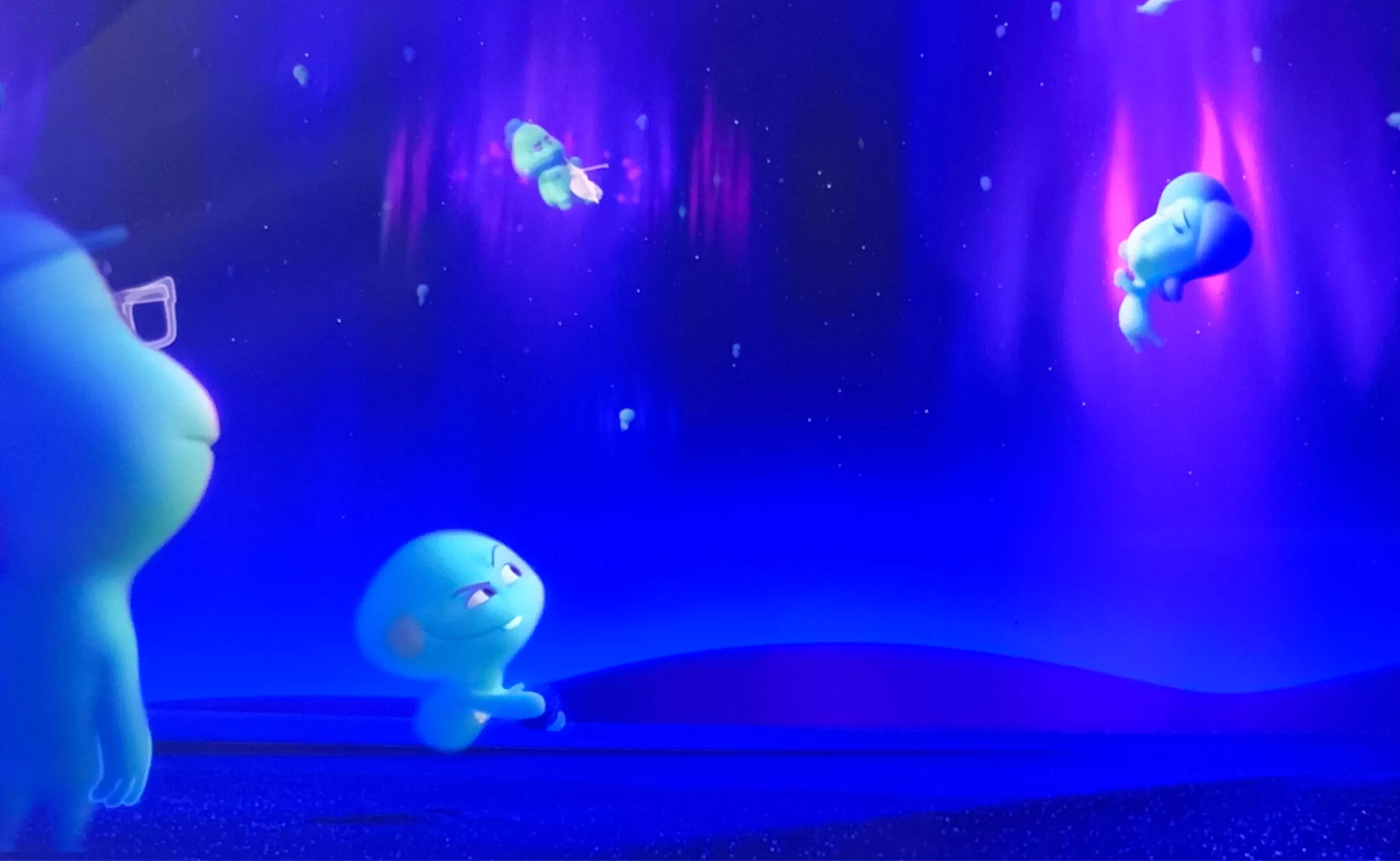
Creative trance: a capacity of the human brain
As we have seen, the activity of the prefrontal cortex and the beta waves emitted by the brain – responsible for our rationality – drop when we are in flow. We then enter a state of deep relaxation, similar to dreaming, meditation or even trance, in which our unconscious has more freedom. The alpha and theta brain waves are dominant. The right brain, the heart of sensitivity, emotions, wisdom and creativity takes over. We let go, we are faster and more efficient because the rational machniery of our left brain are muted.
The flow is also known as an altered state of consciousness (ASC), in which the subject experiences a different relationship with the world, himself, his body, his identity. It is safe to assume that children who play are in a prolonged and almost permanent state of flow. Spiritual trances, near-death experiences or conscious childbirth (which brings together the two previous situations) are also moments of flow of uncommon intensity. This is another fascinating subject!
Ultimate creativity: spiritual experience and neuroscience as one
If we make the connection between the creative flow state and altered states of consciousness such as a spiritual experience, a trance or a deep meditation, we can then connect creativity and spiritual experience. In Hindu, Jain or Buddhist traditions, flow is called “Samadhi“: a state of enlightenment and awakening in which consciousness is one, both in the subject and on the subject who experiences it, i.e. being simultaneously actor and observer. Flow-samadhi is the state of perfect concentration.
And this is exactly what Corine Sombrun, whose trance brain has been studied by neuroscientists, explained. The flow-transe-samadhi or call it what you want, allows to gather, unify and concentrate mind in full consciousness… and to open it on universality.
This verticalization brought by mindfulness allows both refocusing and detachment from ego, connection to here and now, and to the universal knowledge. Yes, I know, it is going far. But Samadhi (flow) is indeed the ultimate Buddhist step that allows to get out of the infinite cycle via verticality (accomplishment, mindfulness) to finally reach Nirvana: the knowledge of the true, beyond the self.
This is the scientific experience that the brain specialist Jill Bolte Taylor tells in her TedX conference (see video below). She explains how a stroke temporarily deprived her of her left hemisphere, making her experience spiritual enlightenment by detaching her from her body, from time, from pain. Exactly what happens under trance / flow, and which would be accessible to all. Would creativity or more precisely the realization of our ultimate cerebral potential via the trance of flow be the door to the sacred, to Nirvana?
Imagine the immense capacities and the gift that we have at our disposal, in our brain! “Here are the us inside me: which one will you choose?” asks Jill Bolte Taylor. This is the quest of a lifetime…!
